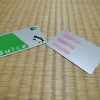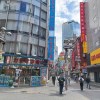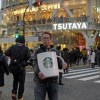
Gigantic squid statue has given a huge boost to the economy, city claims.
The Japanese government has provided various aid to communities to help them cope with the difficulties of life during the pandemic, including grants to help sustain and revitalize local economies. One of the more unique plans for using that money came from the city of Noto, in Ishikawa Prefecture, where the politicians in charge of the town’s grant decided to build a gigantic 13-meter (42.65-foot) long statue of a squid.
The statue was not at all cheap. Noto spent 25 million yen (US$241,500 at exchange rates at the time) of government grant money building the Ika King (“Squid King”), and even that wasn’t enough to finish it, as the city still had to come up with another two million yen to complete the 10-tentacle art installation.
▼ The 27 million-yen Ika King
https://twitter.com/nhk_kanazawa/status/1564227787069718529So…why? Well Noto is famous for its locally caught squid, and the town’s roadside souvenir shop and tourist center Tsukumall is also called the “Squid Station.” The Ika King is located right outside Tsukumall, and the stated hope was that the statue would help attract more visitors who would then purchase regional products and otherwise contribute to the local economy.
27 million yen is a pretty huge investment in squid statuary though, seeing as how that’s a zero-yen expense in the annual budget of almost every other town in Japan. 16 months after the completion of the Ika King, though, Noto is saying it was worth it, claiming that the statue has resulted in visitors pumping approximately 600 million yen into Ishikawa’s economy, more than 22 times the cost of the statue.
ぴ「イカキング」 pic.twitter.com/vOQNhbbYf1
— グラ散歩 (@Geda_2) August 30, 2022
To calculate the Ika King’s economic effect, Noto was assisted by Tokyo-based business consultant Toshiro Shirao. In a Tsukumall visitor survey conducted between June and August of this year, out of 1,125 people 506 of them (45 percent) said they’d come because they wanted to see the Ika King. They were also asked how much they had spent while at Tsukumall.
Next, Shirao and the city looked at records of how many people had made purchases at Tsukumall’s cash registers between April of 2021 (when the Ika King was installed) and July of 2022, arriving at an estimate of 164,556 total visitors. Applying the same 45-percent rate that they’d gotten from this summer’s visitor survey, they came to estimate that 73,652 people have come to see the Ika King since its completion. Shirao then fed that data into an economic input-output model for Ishikawa Prefecture to come up with an estimated 594.44 million yen in inside-Ishikawa spending that the study attributes to the Ika King’s presence.
The study also attempted to account for the value of the media coverage Tsukumall, and by association Noto, has received as result. According to the study, a total of 36 television programs sent crews out for reports on the Ika King, and an analysis of the advertising rates charged by those programs led them to an estimate of roughly 1.8 billion additional yen in free publicity.
Those are some very impressive figures, but when dealing with statistics, it’s always a good idea to consider how the data was collected and how it’s being applied, and there are a few potential issues. Let’s start with the Tsukumall visitor survey, which asked why people had come and how much they spent. The survey was conducted during the summer, when most people, especially those with kids, are more likely to be traveling and spending money at tourist attractions. Those patterns, though, seem to have then been applied to visitors throughout the entire year and a half since the Ika King’s installation. Also important to consider is the large jump in scale in how the survey uses 1,125 survey responses as a base on which to build a model for how much 73,652 people spent.
While the extra TV exposure no doubt had a positive effect on visitor and spending numbers, the estimated 1.8 billion yen of free publicity feels like a pretty clear attempt to inflate the size of the success story, since the attention’s economic value is in its ability to attract visitors, whose economic benefit is already supposed to have been accounted for in the 594.44 million yen the study says Ika King-attracted visitors have contributed to Ishikawa. And speaking of that 594.44 million yen, it’s worth remembering that it’s an estimate for the entire prefecture, not the town of Noto itself.
Still, it’s nice to see that there’s some good, and maybe even a whole lot of it, coming from the Ika King’s presence. Oh, and it should be pointed out that Shirao carried out the economic analysis on a volunteer basis, so his work didn’t cost the town a thing.
Source: Hokkoku Shimbun via Yahoo! Japan News via Hachima Kiko
Top image: Pakutaso (edited by SoraNews24)
● Want to hear about SoraNews24’s latest articles as soon as they’re published? Follow us on Facebook and Twitter!

 Which parts of Ishikawa are OK to travel to after Noto quake? Government shares guideline map
Which parts of Ishikawa are OK to travel to after Noto quake? Government shares guideline map Drink, cook, eat — New “Ika Glass” is a cup made entirely of squid【Pics】
Drink, cook, eat — New “Ika Glass” is a cup made entirely of squid【Pics】 What it’s like to eat dancing squid in Japan for the first time
What it’s like to eat dancing squid in Japan for the first time Japanese book “nekotan” teaches foreign language the best way possible: by talking about cats
Japanese book “nekotan” teaches foreign language the best way possible: by talking about cats First ever Pringles instant cup ramen noodles are coming to Japan
First ever Pringles instant cup ramen noodles are coming to Japan Japan’s new difficult-to-drink-from beer glass protects your liver, but it’s a brutal experience
Japan’s new difficult-to-drink-from beer glass protects your liver, but it’s a brutal experience How to order snacks on a Shinkansen bullet train in Japan
How to order snacks on a Shinkansen bullet train in Japan Demon Slayer: Kimetsu no Yaiba gets new roller coaster attractions and food at Universal Studios Japan
Demon Slayer: Kimetsu no Yaiba gets new roller coaster attractions and food at Universal Studios Japan New Pokémon ice cream, dessert drinks, and cool merch coming to Baskin-Robbins Japan【Pics】
New Pokémon ice cream, dessert drinks, and cool merch coming to Baskin-Robbins Japan【Pics】 Burger King Japan suddenly adds Dr. Pepper and Dr. Pepper floats to its menu nationwide
Burger King Japan suddenly adds Dr. Pepper and Dr. Pepper floats to its menu nationwide Hello, cosmetics! Clinique teams up with Hello Kitty this summer for first-time collaboration
Hello, cosmetics! Clinique teams up with Hello Kitty this summer for first-time collaboration “The most Delicious Cup Noodle in history” – Japan’s French Cup Noodle wins our heart【Taste test】
“The most Delicious Cup Noodle in history” – Japan’s French Cup Noodle wins our heart【Taste test】 To combat declining birth rate, Japan to begin offering “Breeding Visas” to foreigners
To combat declining birth rate, Japan to begin offering “Breeding Visas” to foreigners Starbucks teams up with Japanese shochu brewery for a whole new coffee experience
Starbucks teams up with Japanese shochu brewery for a whole new coffee experience Studio Ghibli releases giant Totoro plushies in Japan
Studio Ghibli releases giant Totoro plushies in Japan Nintendo history you can feel – Super NES, N64, and GameCube controllers become capsule toys
Nintendo history you can feel – Super NES, N64, and GameCube controllers become capsule toys Starbucks releases a cute Frappuccino and Unicorn Cake…but not in Japan
Starbucks releases a cute Frappuccino and Unicorn Cake…but not in Japan Kyoto Tower mascot termination reveals dark side behind cute Japanese characters
Kyoto Tower mascot termination reveals dark side behind cute Japanese characters McDonald’s Japan’s Soft Twist Tower: A phantom ice cream only sold at select branches
McDonald’s Japan’s Soft Twist Tower: A phantom ice cream only sold at select branches Yabai Ramen: What makes this Japanese ramen so dangerous?
Yabai Ramen: What makes this Japanese ramen so dangerous? Finally! Nintendo Japan expands Switch 8-bit controller sales to everybody, Online member or not
Finally! Nintendo Japan expands Switch 8-bit controller sales to everybody, Online member or not Japanese government wants to build luxury resorts in all national parks for foreign tourists
Japanese government wants to build luxury resorts in all national parks for foreign tourists 10 things you should buy at 7-Eleven in Japan
10 things you should buy at 7-Eleven in Japan Studio Ghibli releases anime heroine cosplay dresses that are super comfy to wear
Studio Ghibli releases anime heroine cosplay dresses that are super comfy to wear Woman charged for driving suitcase without a license in Osaka
Woman charged for driving suitcase without a license in Osaka Studio Ghibli unveils My Neighbour Totoro miniature house model
Studio Ghibli unveils My Neighbour Totoro miniature house model Kyoto experiencing problems with foreign tourists not paying for bus fares, but not on purpose
Kyoto experiencing problems with foreign tourists not paying for bus fares, but not on purpose Fighting mild hunger with a Japanese soda that turns into jelly in the stomach【Taste test】
Fighting mild hunger with a Japanese soda that turns into jelly in the stomach【Taste test】 Studio Ghibli’s Howl’s Moving Castle tapestry unveiled in Japan for first time
Studio Ghibli’s Howl’s Moving Castle tapestry unveiled in Japan for first time McDonald’s new Happy Meals offer up cute and practical Sanrio lifestyle goods
McDonald’s new Happy Meals offer up cute and practical Sanrio lifestyle goods Sales of Japan’s most convenient train ticket/shopping payment cards suspended indefinitely
Sales of Japan’s most convenient train ticket/shopping payment cards suspended indefinitely Sold-out Studio Ghibli desktop humidifiers are back so Totoro can help you through the dry season
Sold-out Studio Ghibli desktop humidifiers are back so Totoro can help you through the dry season Japanese government to make first change to romanization spelling rules since the 1950s
Japanese government to make first change to romanization spelling rules since the 1950s Foreigner’s request for help in Tokyo makes us sad for the state of society
Foreigner’s request for help in Tokyo makes us sad for the state of society Ghibli founders Toshio Suzuki and Hayao Miyazaki contribute to Japanese whisky Totoro label design
Ghibli founders Toshio Suzuki and Hayao Miyazaki contribute to Japanese whisky Totoro label design Doraemon found buried at sea as scene from 1993 anime becomes real life【Photos】
Doraemon found buried at sea as scene from 1993 anime becomes real life【Photos】 Tokyo’s most famous Starbucks is closed
Tokyo’s most famous Starbucks is closed Princesses, fruits, and blacksmiths: Study reveals the 30 most unusual family names in Japan
Princesses, fruits, and blacksmiths: Study reveals the 30 most unusual family names in Japan Dom Dom’s Squid Devil Burger is here to shake up the gourmet scene like a tokusatsu bad guy
Dom Dom’s Squid Devil Burger is here to shake up the gourmet scene like a tokusatsu bad guy How to put together a senbero drinking/snack session at Japan’s 100-yen convenience store【Photos】
How to put together a senbero drinking/snack session at Japan’s 100-yen convenience store【Photos】 70% of South Koreans will donate to fund for unity with North, want US and China to cough up too
70% of South Koreans will donate to fund for unity with North, want US and China to cough up too Is pachinko headed for extinction in Japan? Studies reveal huge drop in players, hall operators
Is pachinko headed for extinction in Japan? Studies reveal huge drop in players, hall operators Terrifying Cthulhu-yaki created by lazy Japanese home chef
Terrifying Cthulhu-yaki created by lazy Japanese home chef Learn Japanese through ridiculous manga: Narutoe 【Episode #2】
Learn Japanese through ridiculous manga: Narutoe 【Episode #2】 Splatoon’s squid vs octopus Splatfest asks deep questions, ruins marriages
Splatoon’s squid vs octopus Splatfest asks deep questions, ruins marriages Yoshiki auctions off beloved crystal piano to support Noto Peninsula earthquake victims
Yoshiki auctions off beloved crystal piano to support Noto Peninsula earthquake victims Kyoto Animation official donation account raises over 1 billion yen (US$10.1 million) in one week
Kyoto Animation official donation account raises over 1 billion yen (US$10.1 million) in one week Japan develops special sushi for pregnant women
Japan develops special sushi for pregnant women Japanese diners pick their eight favorite types of sushi, create mouthwatering dinner blueprint
Japanese diners pick their eight favorite types of sushi, create mouthwatering dinner blueprint The best Japanese cosplayers from Day 4 of Summer Comiket 2019【Photos】
The best Japanese cosplayers from Day 4 of Summer Comiket 2019【Photos】 Successful Wii U shooter Splatoon is about to get two manga adaptations
Successful Wii U shooter Splatoon is about to get two manga adaptations Japan’s government reconsiders plan to change country’s iconic hot spring symbol after backlash
Japan’s government reconsiders plan to change country’s iconic hot spring symbol after backlash Japanese town refuses to pay bear patrol hunting club as animals spotted on streets, at harbor【Vid】
Japanese town refuses to pay bear patrol hunting club as animals spotted on streets, at harbor【Vid】
Leave a Reply